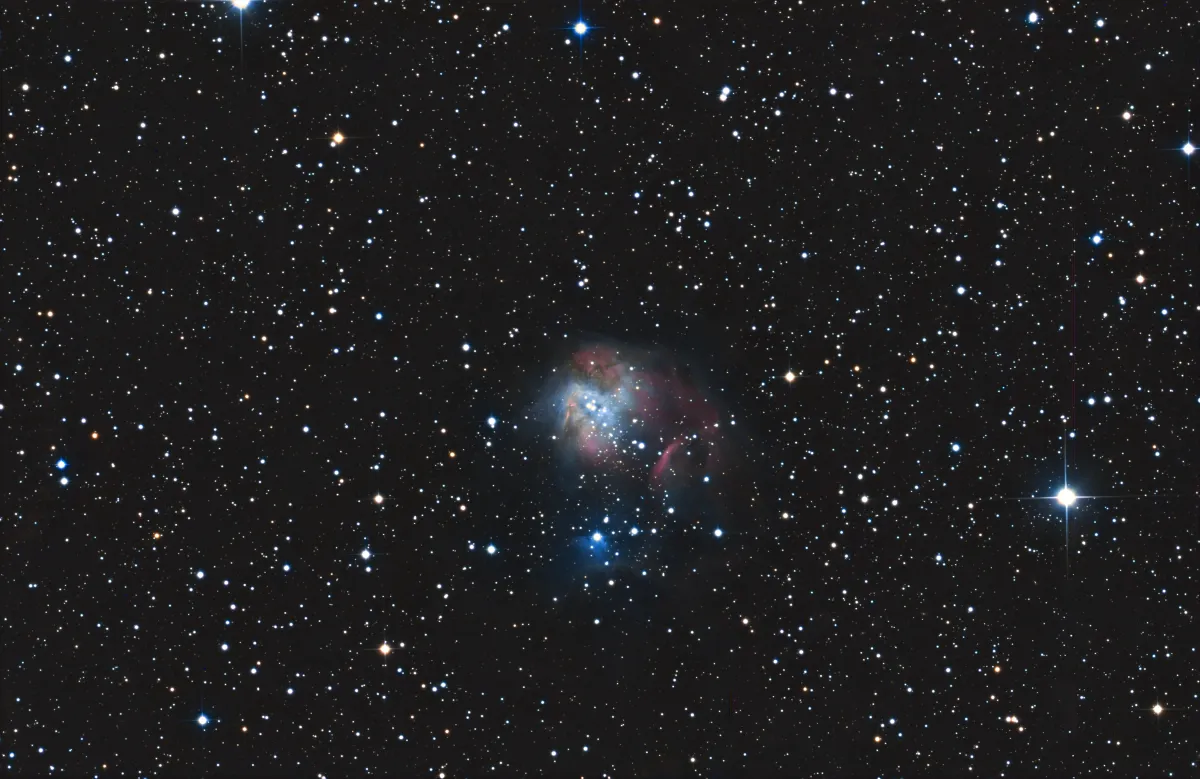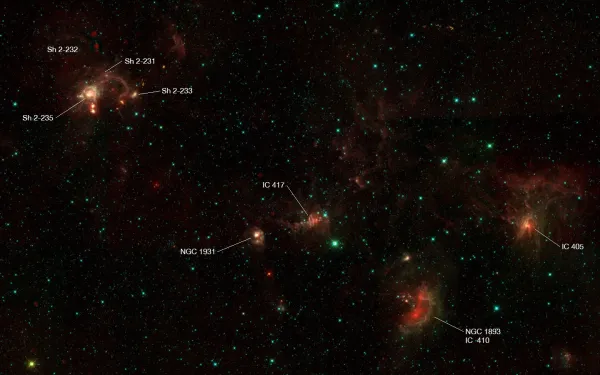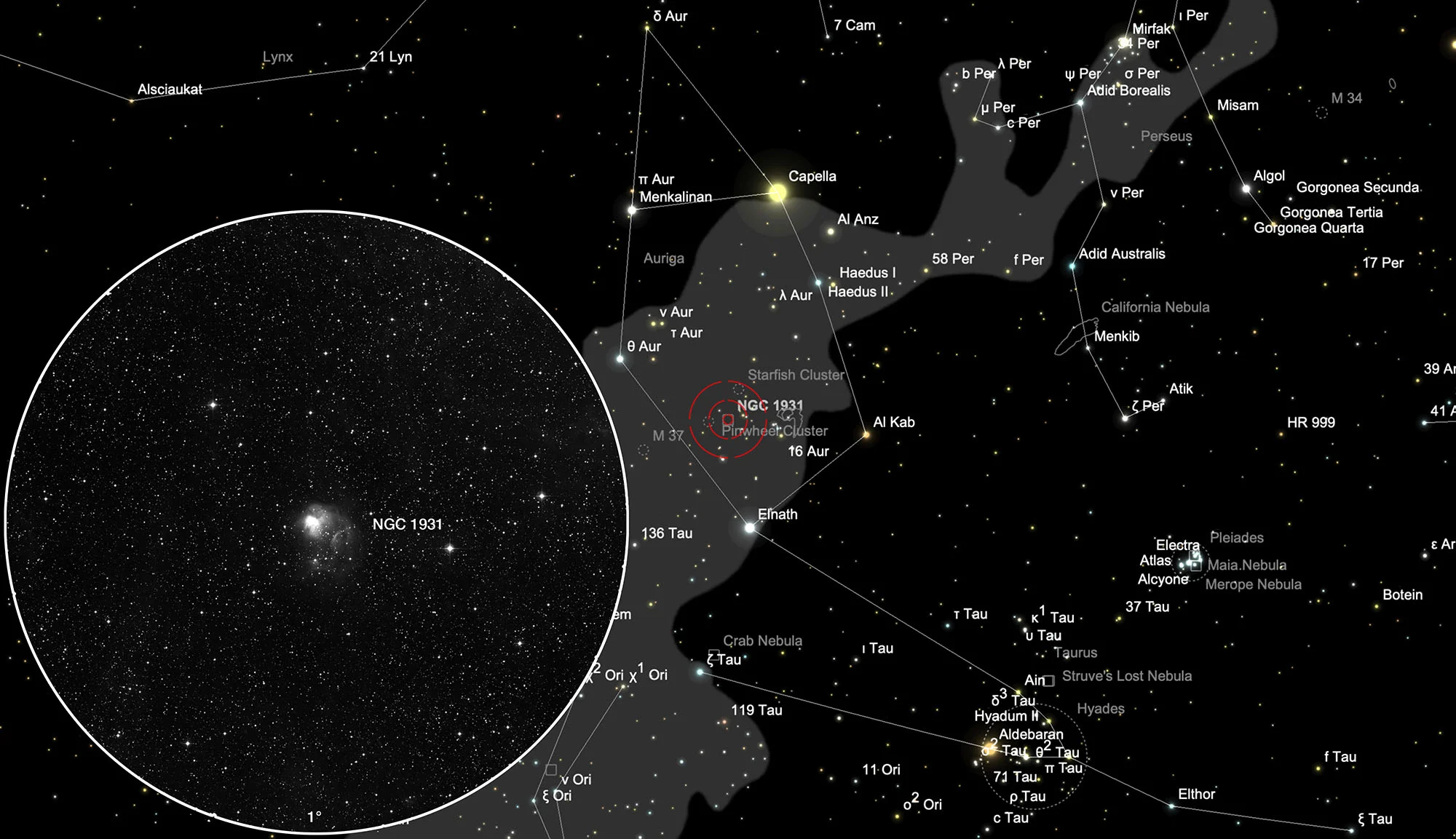Cluster with Nebula NGC 1931

Object Description
NGC 1931 was discovered by William Herschel on 4 February 1793. It is a young star cluster, surrounded by a nebula of gas and dust and has partly amorphous, but partly also a filament-like structure. The dust nebula surrounds a small cluster of faint stars. It resembles a miniature version of the Orion Nebula and is located in a spiral arm of the Milky Way, which is probably an extension of the Perseus arm. Distances vary from 1.8 pkc to 2.16 kpc (5870 to 7050 light years). The nebula has an angular dimension of 4'x4 'and an integrated brightness of 11.3 mag. [196, 219]

As can be seen on the infrared image of the Wide-field Infrared Survey Explorer (WISE) in Fig. 2, NGC 1931 belongs to a larger, loosely connected complex of H-II clouds in the constellation Auriga, to which IC 405, IC 410 (with open star cluster NGC 1893), as well as from the Sharpless catalog Sh 2-231, Sh 2-232, Sh 2-233 and Sh 2-235 belong. However, these are so faint that they cannot be captured visually, but only photographically.
| Designation | NGC 1931 |
| Type | EN+OCL |
| Right Ascension (J2000.0) | 05h 31m 25.7s |
| Declination (J2000.0) | +34° 14' 42" |
| Visual magnitude | 10.1 mag |
| Metric Distance | 3.086 kpc |
| Dreyer Description | vB, L, R, B *** in M |
| Identification, Remarks | WH I 261; h 355; GC 1137; LBN 810; OCL 441 |
Finder Chart
Approximately between the two stars ι Aurigae (Hassaleh) and θ Aurigae is NGC 1931 in the immediate vicinity of the two beautiful open star clusters Messier 36 and Messier 38 and the smaller NGC 1907. About one degree to the west of NGC 1931 is the 5.1 mag bright Star φ Aurigae, which can still be recognized by the eye. This object can be easily observed from August to May.
